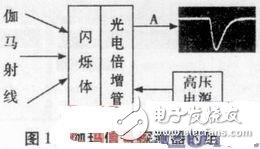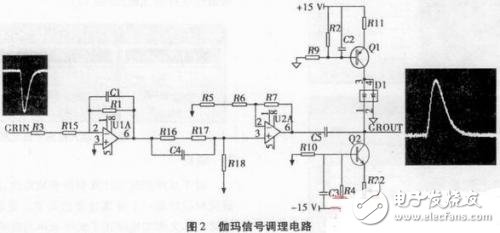Peak measurement of gamma spectroscopy based on FPGA
In the oil logging industry, the measurement of gamma spectroscopy is an important logging method. This paper combines pulse neutron energy spectrum measurement to study the peak detection of gamma pulse, using differential, delay circuit and FPGA device. The peak value of the gamma signal can be well detected. From the experimental results, the linearity of the peak detection basically meets the requirements of the energy spectrum measurement.
0 PrefaceAs a strategic resource, oil has received more and more attention from all countries in the world. But oil is a non-renewable energy source. With the continuous development of the world economy, the demand for oil is also growing. Therefore, in order to scientifically and reasonably exploit limited petroleum resources, various logging methods have been invented. Among them, non-elastic, trapping and activation energy spectrum measurement has become an important branch of logging, which can reflect the remaining oil and oil fields. Residual oil saturation and other indicators, in order to get a good spectrum, we must first have a good peak detection and maintenance circuit, this paper mainly analyzes the peak detection and retention part of the spectrum data measurement process, using differential and delay The circuit and Verilog language enable peak detection and retention of gamma signals, providing a good solution for spectrum acquisition.
1 gamma signal acquisitionAny signal acquisition is through the sensor. The sensor of gamma signal is called gamma signal detector. It is mainly composed of scintillator, photomultiplier tube and high voltage power supply. The commonly used scintillator is cesium bromide. BGO and sodium iodide, etc., the detector consisting of sodium iodide crystal and photomultiplier tube and high voltage power source is used to obtain the gamma signal.

As shown in Fig. 1, when the gamma ray hits the scintillator, the scintillator generates photons, and the photons are sent to the photomultiplier tube through the photoconductive medium. Under the action of the high voltage power source, the photoelectric signal is enhanced step by step, and finally formed as shown in Fig. 1. A negative gamma electrical signal at A, which is processed by the preamplifier circuit to adjust the pulse width and amplitude signals we need to perform peak detection.
2 gamma signal conditioningAfter getting the negative gamma signal, we first need to modulate it to get the pulse width and amplitude signals we want, as shown in Figure 2. First, through the inverting amplifier, the signal is slightly amplified while the amplification is reversed. Integral processing, the signal pulse width is broadened to about 1.5μs. The magnitude of the signal amplification is determined by the energy we are measuring and the input range of the ADC device. The energy of the gamma ray measured in this paper is 0.8 MeV ~ 10 MeV, and the input of the ADC is 0 ~ 8 V, so the entire measured energy region can be converted into a voltage signal, which is 0.64 V ~ 8 V, to be accurately adjusted. Magnification should be calibrated with the source of the source. This is not the focus of the article. I will not introduce it too much here. When the signal amplification is adjusted, the signal will deviate from the baseline due to the accumulation of signals or the instability of the op amp parameters. Therefore, our circuit uses an active dual diode baseline recovery method to make the signal start position total. At the zero level, it lays the foundation for the energy spectrum data.

Lvds Connector,Solder Type Lvds Connector,51Pin Stand-Up Lvds Connector,Reclining Paste 51Pin Lvds Connector
Shenzhen CGE Electronics Co.,Ltd , https://www.cgeconnector.com